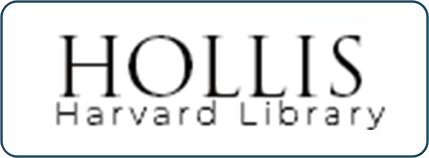Qualitative study in identifying factors affecting the behavior of Muslim generation Y towards Islamic home financing products in Malaysia
DOI:
https://doi.org/10.33102/jmifr.v18i2.366Keywords:
Islamic home financing, house acquisition, consumer behavior, ABC theoryAbstract
House is the most important basic need for the human survival, however many individuals especially those who are categorised in the category of generation Y still do not acquire a house due to various factors. It is quite a normal practice for most of home-buyers in Malaysia to purchase a house through banking institutions. However, as a Muslim, it is an obligation to purchase and acquire a house through Islamic financial institutions (IFIs) as it is accordance to the Shariah principle. The objective of the study is to qualitatively identify factors affecting the behavior of Muslims generation Y in Malaysia towards Islamic home financing products. Apparently, it is found that religious belief, profit rate, offer and promotion, and fast service (loan approval) are factors in affecting Muslims generation Y in choosing Islamic home financing products. Afterwards, the study proposed to integrate the findings (identified factors) with the theory of Attitude-Behavior-Context (ABC). The study findings are expected to contribute significantly to the theory, methodology, and empirical practices.
Downloads
References
Ahmad, T., Nawaz, P. A., Din, S. U., & Ullah, S. (2015). Predicting the customers ’ attitude towards Islamic banking : A survey of customers from Dera Ismail Khan Pakistan. Euro-Asian Journal of Economics and Finance, 3(1), 53–63.
Aliman, N. K., Ariffin, Z. Z., & Hashim, S. M. (2018). Religiosity commitment and decision-making styles among generation Y Muslim consumers in Malaysia. International Journal of
Academic Research in Business and Social Sciences, 8(1), 546–568. https://doi.org/10.6007/ijarbss/v8-i1/3830
Amin, H. (2008). Choice criteria for Islamic home financing: Empirical investigation among Malaysian bank customers. International Journal of Housing Markets and Analysis, 1(3), 256–274. https://doi.org/10.1108/17538270810895105
Amin, H. (2019). The Islamic theory of consumer behaviour for ijarah home financing. Journal of Asia Business Studies, 13(4), 672–693. https://doi.org/10.1108/JABS-09-2018-0261
Amin, H., Abdul Rahman, A. R., Abdul Razak, D., & Rizal, H. (2017). Consumer attitude and preference in the Islamic mortgage sector: A study of Malaysian consumers. Management Research Review, 40(1), 95–115. https://doi.org/10.1108/MRR-07-2015-0159
Amin, H., Rahim, A., & Abdul Razak, D. (2014). Consumer acceptance of Islamic home financing. International Journal of Housing Markets and Analysis, 7(3), 307–332. https://doi.org/10.1108/IJHMA-12-2012-0063
Awan, A. G., & Azhar, M. (2014). Consumer behaviour towards Islamic banking in Pakistan. European Journal of Accounting Auditing and Finance Research, 2(9), 42–65.
Azmi, W. N. W., & Madden, R. (2015). Finance matters: Understanding Gen Y - Bridging the knowledge gap of Malaysia’s millennials. In Asian Institute of Finance. http://www.aif.org.my/clients/aif_d01/assets/multimediaMS/publication/Finance_Matters_Understanding_Gen_Y_Bridging_the_Knowledge_Gap_of_Malaysias_Millennials.pdf
Bukhari, F., Hussain, S., Ahmed, R. R., Streimikiene, D., Soomro, R. H., & Channar, Z. A. (2020). Motives and role of religiosity towards consumer purchase behavior in western imported food products. Sustainability (Switzerland), 12(1), 1–22. https://doi.org/10.3390/SU12010356
Carvalho, M., Sivahandam, H., Rahim, R., & Tan, T. (2019, October 17). Over 80,000 Malaysians declared bankrupt since 2015. The Star. https://www.thestar.com.my/news/nation/2019/10/17/over-80000-malaysians-declared-bankrupt-since-2015
Chia, J., Harun, A., Wahid, A., Kassim, M., Martin, D., & Kepal, N. (2016). Understanding factors that influence house purchase intention among consumers in Kota Kinabalu: An application of buyer behavior model theory. Journal of Technology Management and Business, 3(2), 94–110.
Department of Statistic Malaysia. (2020). Key Statistics of Labour Force in Malaysia. https://www.dosm.gov.my/v1/index.php?r=column/cthemeByCat&cat=124&bul_id=QVNxSFB6d2tOT0ZVck5CNUxWK1o4Zz09&menu_id=Tm8zcnRjdVRNWWlpWjRlbmtlaDk1UT09
Doraisamy, B., Shanmugam, A., & Raman, R. (2011). A study on consumers’ preferences of Islamic banking products and services in Sungai Petani. Academic Research International, 1(3), 284–295.
Febrian, T., Siang Ng, W., & Al-Natoor, B. (2019). 2019 Malaysian Islamic banking overview. https://your.fitch.group/rs/732-CKH-767/images/Fitch - 2019 Malaysian Islamic Banking Overview.pdf?mkt_tok=eyJpIjoiWW1JeFlURTFORFJsTldGaCIsInQiOiJaV1Z3b0VyTXdjRnR4VFN1WHVUcEt4dkxNblFxeWVBUE1Ld3V3aG1QTVZMdFJrSzhZNmx4dWFMMnFnM2l2clAzME0rdW1ob2FmekRMeENhTnJ4
Fitch Ratings. (2020). Malaysia Islamic banks dashboard 2020. https://www.fitchratings.com/research/banks/malaysia-islamic-banks-dashboard-2020-04-03-2020
Guagnano, G. A., Stern, P. C., & Dietz, T. (1995). Influences on attitude-behavior relationships: A natural experiment with curbside recycling. Environment and Behavior, 27(5), 699–718. https://doi.org/10.1177/0013916595275005
Guo, Z., Zhou, K., Zhang, C., Lu, X., Chen, W., & Yang, S. (2018). Residential electricity consumption behavior: Influencing factors, related theories and intervention strategies. Renewable and Sustainable Energy Reviews, 81(January), 399–412. https://doi.org/10.1016/j.rser.2017.07.046
Hamid, A., & Masood, O. (2011). Selection criteria for Islamic home financing: A case study of Pakistan. Qualitative Research in Financial Markets, 3(2), 117–130. https://doi.org/10.1108/17554171111155357
Hanif, M. (2011). Similarities and differences in Islamic and conventional banking. International Journal of Business and Social Science, 2(2), 166–175. https://doi.org/10.43337/97817 https://doi.org/10.4337/9781783476138.00010
Ishak, M. S. I., & Mohammad Nasir, N. S. (2021). Maqasid al-shari’ah in Islamic finance: Harmonizing theory and reality. The Journal of Muamalat and Islamic Finance Research, 18(1), 108–119. https://doi.org/10.33102/jmifr.v18i1.334
Ismail, S., Azmi, F., & Thurasamy, R. (2014). Selection criteria for Islamic home financing in Malaysia. International Journal of Business and Society, 15(1), 97–110.
Kaur, B., & Hassan, Z. (2018). Impact of age, gender, income, education and financial literacy towards retirement planning among generation “Y” in Malaysia. International Journal of Education, Learning and Training, 3(December), 30–53. https://doi.org/10.24924/ijelt/2018.11/v3.iss1/30.53
Lim, Y. S., Omar, A., & Thurasamy, R. (2015). Online purchase: A study of generation Y in Malaysia. International Journal of Business and Management, 10(6), 1–7. https://doi.org/10.5539/ijbm.v10n6p298
Loo, M. (2010). Attitudes and perceptions towards Islamic banking among Muslims and Non-Muslims in Malaysia: Implications for marketing to baby boomers and X-Generation. International Journal of Arts and Sciences, 3(13), 453–485.
Malaysian Department of Insolvency. (2020). Statistik kebankrapan.
Mariadas, P. A., & Murthy, U. (2017). Factors influencing the adoption of Islamic banking in Malaysia. International Journal of Business and Management, 12(11), 187–193. https://doi.org/10.5539/ijbm.v12n11p187
Mohamed Naim, A., Abd. Hamid, M. L., & Haji Wahab, M. Z. (2019). The roles of lifestyle, future need and customer preferences in customer’s satisfaction on Islamic banks products and services. The Journal of Muamalat and Islamic Finance Research, 16(2), 60–76. https://doi.org/10.33102/jmifr.v16i2.223
Mohd Thas Thaker, H., & Sakaran, K. C. (2016). Prioritisation of key attributes influencing the decision to purchase a residential property in Malaysia: An Analytic Hierarchy Process (AHP) approach. International Journal of Housing Markets and Analysis, 9(4), 446–467. https://doi.org/101108/IJHMA-09-2015-0052
Mohd Yusof, R., Mohd Khan, S. J., M. Yusuf, F., & Abdul Majid, N. H. (2019). Bridging the supply and demand gap for affordable home ownership in Malaysia: The roles of government and financial institutions. Journal of the Malaysian Institute of Planners, 17(1), 160–175. https://doi.org/10.21837/pmjournal.v17i9.595
Muneeza, A., Fauzi, M., Mat Nor, M. F., Abideen, M., & Ajroudi, M. M. (2020). House financing: Contracts used by Islamic banks for finished properties in Malaysia. Journal of Islamic Accounting and Business Research, 11(1), 168–178. https://doi.org/10.1108/JIABR-04-2017-0057
Muneeza, A., Zainudin, N. A., Ali, R., Ibrahim, S. N., & Mustapha, Z. (2019). Application of ta’widh and gharamah in Islamic banking in Malaysia. The Journal of Muamalat and Islamic
Finance Research, 16(1), 1–16. https://doi.org/10.331202/jmifr.v16i1.205
Murugiah, S. (2020, January 14). Malaysia 2020 unemployment could reach 3.4%– 3.6%, says AmBank research. The Edge Market. https://www.theedgemarkets.com/article/malaysia-2020-unemployment-could-reach-34–-36-says-ambank-research
Olander, F., & Thogersen, J. (2005). The A-B-C of recycling. E- European Advances in Consumer Research, 7, 297–302. http://www.acrwebsite.org/volumes/13834/eacr/vol7/E-07
Pusat Maklumat Harta Negara Malaysia. (2020). Trend of Malaysian House Price Index (MHPI) and changes. https://napic.jpph.gov.my/portal/key-statistics
Rosli, L. (2019, March 27). Malaysian workers receive lower wages than peers in advanced economies. New Straits Times. https://www.nst.com.my/business/2019/03/473445/malaysian-workers-receive-lower-wages-peers-advanced-economies
Saunders, M., Lewis, P., & Thornhill, A. (2009). Research methods for business students (5th ed.). Pearson Education Limited. https://doi.org/10.1080/09523367.2012.743996
Saunders, M. N., & Townsend, K. (2016). Reporting and justifying the number of interview participants in organization and workplace research. British Journal of Management, 27(4), 836–852. https://doi.org/10.1111/1467-8551.12182
Sekaran, U. (2003). Research methods for business: A skill building approach (4th ed.). John Wiley & Sons, Inc.
Sekaran, U., & Bougie, R. (2016). Research methods for business (7th ed.). John Wiley & Sons Ltd.
Selamat, Z., & Abdul-Kadir, H. (2012). Attitude and patronage factors of bank customers in Malaysia : Muslim and non-Muslim views. Journal of Islamic Economics, Banking and Finance, 8(4), 87–100.
Soon, A., & Tan, C. (2019). An analysis on housing affordability in Malaysian housing markets and the home buyers’ preference. International Journal of Housing Markets and Analysis, ahead-of-p(ahead-of-print). https://doi.org/10.1108/ijhma-01-2019-0009.
Teng, W., Ma, C., Pahlevansharif, S., & Turner, J. J. (2019). Graduate readiness for the employment market of the 4th industrial revolution: The development of soft employability skills. Education and Training, 61(5), 590–604. https://doi.org/10.1108/ET-07-2018-0154
Visitnitikija, C., & Chonphunnon, A. (2016). Factors effecting consumer behavior of buying a single housing estate. International Research Journal of Advanced Engineering and Science, 2(1), 39–41.
World Bank Group. (2019). Malaysia economic monitor: Making ends meet (Issue December). https://www.worldbank.org/en/country/malaysia/publication/malaysia-economic-monitor-making-ends-meet
Xu, X., Maki, A., Chen, C. F, Dong, B., & Day, J. K. (2017). Investigating willingness to save energy and communication about energy use in the American workplace with the attitude-behavior-context model. Energy Research and Social Science, 32, 13–22. https://doi.org/10.1016/j.erss.2017.02.011
Zepeda, L., & Deal, D. (2009). Organic and local food consumer behaviour. International Journal of Consumer Studies, 33, 697–705. https://doi.org/10.1111/j.1470-6431.2009.00814.x
Zikmund, W. G., Babin, B. J., Carr, J. C., & Griffin, M. (2009). Business research methods. South-Western College Pub.
Downloads
Published
How to Cite
Issue
Section
License
Copyright (c) 2021 Nik Mohd Fadhil Nik Mohammad , Siti Salwani Razali, Marhanum Che Mohd Salleh

This work is licensed under a Creative Commons Attribution 4.0 International License.















